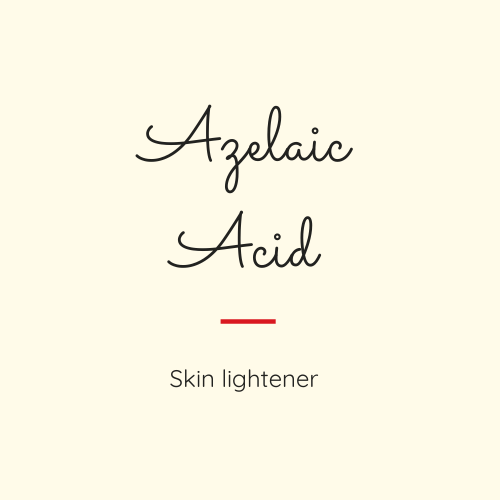Azelaic Acid has been used as a prescription grade treatment mainly for melasama, acne and roseacea. However, recently you may have noticed the plethora of products that contain Azelaic Acid ranging from The Ordinary’s 10% Azelaic Acid to Paula’s Choice 10% Azelaic Acid Booster.
Azelaic Acid is a dicarboxylic acid that’s obtained from cultures of basically a fungus (Pityrosporum Ovale). In a lab – which is what you are likely to get in your product – its obtained from the oxidation of (e.g.) oleic acid.
Most of the literature on Azelaic Acid points to melasma studies and its effectiveness there as well as its much safer profile than hydroquinone.
Most of the studies that have been conducted on Azelaic Acid are to do with melasama, acne or roseacea.
The oft quoted study involved, a placebo controlled clinical study performed on 52 women with dark or pigmented skin and who suffered from melasma. They were using Azelaic Acid 20% cream for 24 weeks. The main findings were
- A significant reduction in pigment intensity
- Improvement in skin condition – overall the women found their skin was smoother
The side-effects were burning and stinging reported around week 4. It was otherwise well tolerated by the women.
Evidence as a skin lightener
The skin lightening ability of this ingredient has not yet been properly investigated – although no one disagrees that it interferes with tyrosinase and therefore reduces melanin produced. This should lighten skin.
I am going to do the next best thing and order and use this product. We can figure out if Azelaic Acid is a skin lightener when I product test NIOD. NIOD uses Potassium Azeloyl Diglycinate which is a derivative of Azelaic Acid, that’s designed to deliver many of its benefits.

NIOD RE-PIGMENT (30ml for £50)I guess watch this space.
Sources and uses
Lowe N J et al, Azelaic acid 20% cream in the treatment of facial hyperpigmentation in darker-skinned patients, Clinical Therapeutics, Vol 20, Issue 5, Sept-Oct 1998, 945-959
